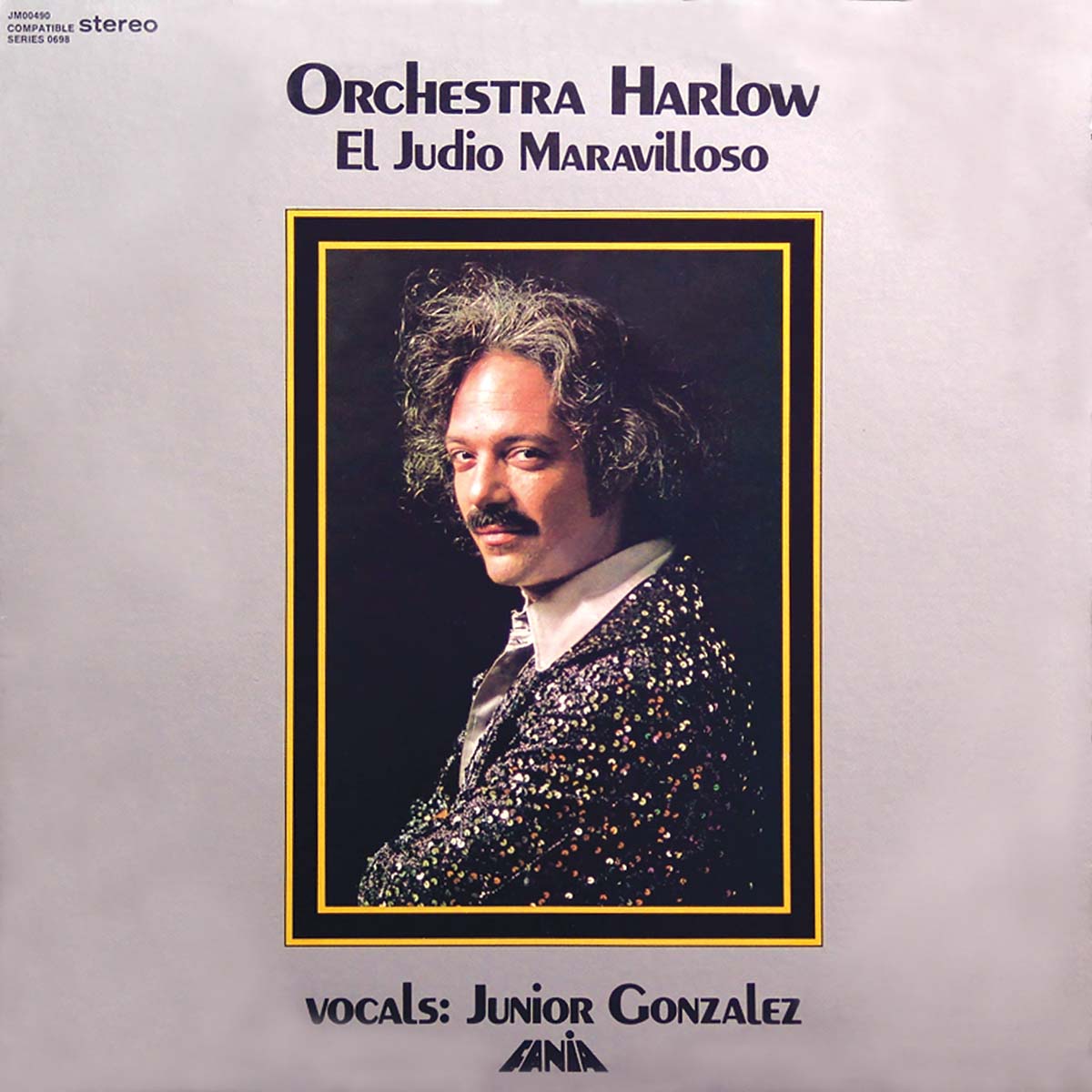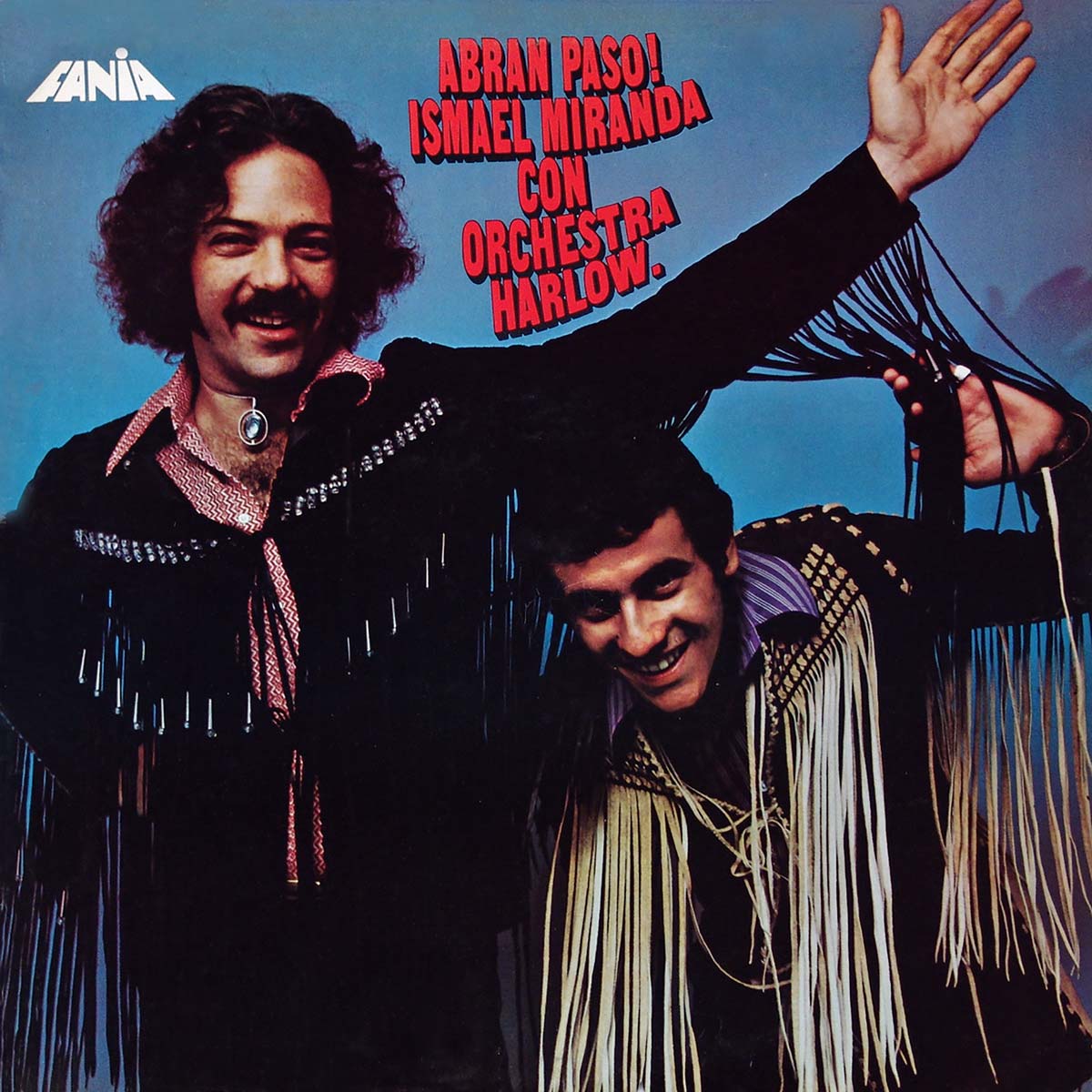
By the time the Orchestra Harlow released “El Judío Maravilloso” in 1975, Jewish American keyboardist, bandleader and arranger Larry Harlow was already recognized as one of the most original voices to come out of the ’70s New York salsa explosion.
Harlow’s artistic identity was not only established by his jazzy piano style and the desire to merge the Afro-Cuban aesthetic with a touch of psychedelia and rock’n’roll. Throughout the ’70s, he proved that he was a true conceptualist who regarded LPs as much more than two sides of spicy dance tunes. In the hands of Harlow, a salsa record became a resounding statement of artistic purpose.
“El Judío Maravilloso” is one such album– an exquisite buffet of tropical stylings for the Afro-Caribbean connoiseur. A record that switches restlessly between charanga grandeur and conjunto swing, throwing in a bolero and a funky r&b instrumental for good measure.
The album title came to the bandleader after touring South America and realizing that the Spanish speaking sudamericanos had a problem pronouncing correctly such a gringo name.
I would travel to Colombia and Venezuela and they’d call me Harry Harlow or Carlo Harlow, he says with a laugh from his home in New York. They had a problem with my name, but at the same time they did know me as El Judío Maravilloso. So I decided that my nickname should be the title of my next album.
It only takes a few minutes off the record’s opening track “El Dolorcito De Mi China” for Harlow to justify the Maravilloso part. The Cuban flavored tune begins with vocalist Junior González enthusiastically belting out a lyric about a young woman who suffers from a little pain that goes away only when she gets a visit from her boyfriend. Fair enough as far as double entendres go, but the tune truly comes to life during that memorable instrumental break in the middle, when Harlow launches into a piano solo for the ages– a small miracle of condensed flavor.
After all these years, I actually listened to it again a couple of months ago, says Harlow. And then, showing off his modesty of spirit, he adds: It was just a solo. I played a good one that day. Nothing special.
What’s undeniably special about “El Judío Maravilloso” is the record’s ability to switch between delicate passages of charanga (with the violin and flute riffs characteristic of this quintessential Cuban format) and the more muscular conjunto instrumentation with the addition of trumpets and trombones.
I was a huge Orquesta Aragón fan, and Arsenio Rodríguez was my ultimate hero, explains the pianist. Fortunately, many of the people in my band were multi-instrumentalists, so I had a charanga and a conjunto within the same orchestra. Nobody had done a charanga with trumpets and trombones before.
If there’s one track that shows off Harlow’s willingness to experiment, that would be the closing tune, an instrumental scorcher entitled ”Latin Roots”. Combining an Afro beat with a velvety trumpet solo and dissonant notes on the mini-moog, this decidedly trippy jam evokes the psychedelic electricity of seminal fusion band Mahavishnu Orchestra, coupled with the funky vibe of ’70s r&b.
Me being an American, I tried to psychedelisize Latin American music, offers Harlow. From the mid’60s on I had begun wearing Indian clothes, jewelry and a beat-styled haircut on stage while everybody else was still using three-piece suits. And I had already delved into rock with Ambergris, a band that I had in the late ’60s.
He pauses to reflect on the golden days of salsa, a time of seemingly limitless creativity.
I was just trying to stay alive. Experimenting and combining the two sources of music that I loved the most: Afro-Cuban jams and rock’n’roll.
Credits:
Eddie “Guagua” Rivera – Bass
Tony Jimenez – Bongo, Timbales & Percussion
Frank Malabe – Conga, Bata & Percussion
Lewis Kahn – Trombone & Violin
Angel “Papo” Vazquez – Trombone
Ralph Castrello – Trumpet
Robert Fortunato – Trumpet & Flugel Horn
Pete Nater – Trumpet
Larry Harlow – Piano, Celeste, Moog & Percussion
Junior Gonzalez – Lead Vocals & Percussion
Harry Viggiano – Tres
Gonzalo Fernandez – Flute
Ismael Quintana – Guiro
Larry Spencer – Trumpet
Pupi Legarreta – Violin
Harry Max – Violin
Elliot Randall – Drums & Guitar
Steve Berrios – Drums
Frankie Rodriguez – Tumba
Chorus – Marcelino Guerra, Adalberto Santiago, Yayo El Indio, Ruben Blades
Producer – Larry Harlow For Passing Clouds Music
Recorded at – Good Vibrations Sound Studios, N.Y.C.
Engineers – Bernie Fox & Larry Harlow
Arrangements – Larry Harlow, Sonny Bravo, Sam Burtis, Jose Luis Cruz, Louie Ramirez, Charlie Camilieri
Original Album’s Photography – Lee Marshall
Original Album Design – Ron Levine
Thanks to – Beba, Raul, Mercedita, Phillipe, Guillermo and Rita Alan
Written by Ernesto Lechner



